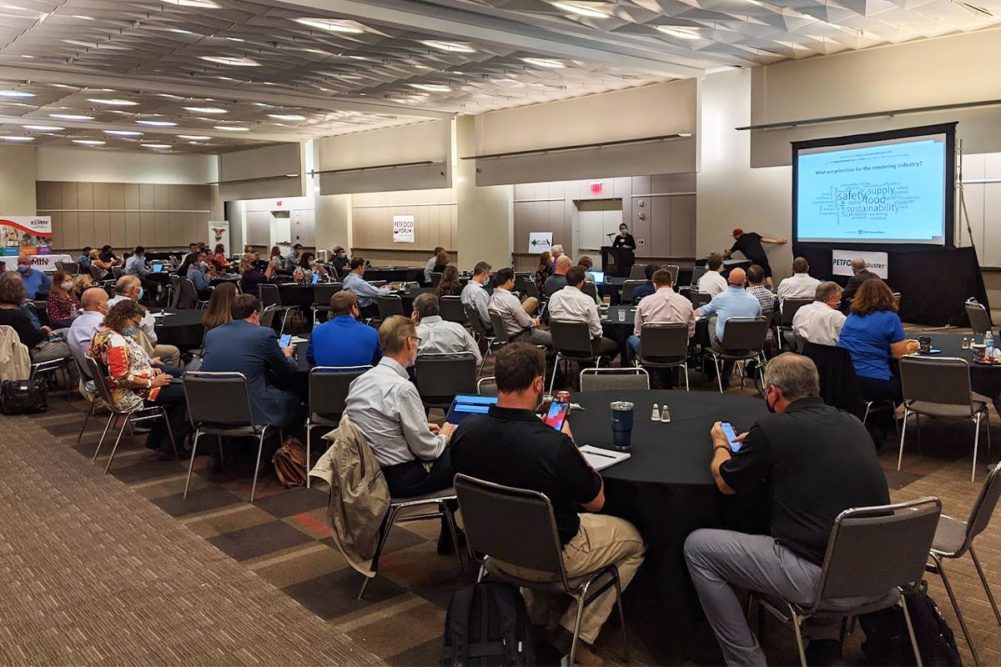KANSAS CITY, MO. — Pet Food Alliance (PFA) held it’s first in-person technical conference in more than a year on Sept. 20 and 21 in Kansas City. The association gathered pet food and rendering processors, suppliers and those in academia to collaborate on key topics impacting the respective industries.
Presentations included an update from the Association of American Feed Control Officials (AAFCO), novel techniques for assessing product quality as an alternative to using peroxide value, the role transportation can play in improving food safety, and technology’s role in foreign material mitigation.
The overarching goal of PFA is to bring together the pet food and rendering industries to develop collaborative relationships and identify, fund and guide research. In addition to networking opportunities throughout the day, the meeting offered opportunities for the PFA working groups to collaborate. Working groups are the mechanism PFA employs to identify research priorities to be guided by industry input and engagement. Funds raised from the meeting’s registration fees are used to support research related to the PFA working group priorities.
“The working groups give us all opportunities to bridge new partnerships, identify needs that may be met by those partnerships but also opportunities that we can explore collaboratively,” said Jennifer Martin, Ph.D., facilitator of the PFA conference and assistant professor, Center for Meat Safety and Quality, Department of Animal Sciences at Colorado State University. “Research is the focus of the Pet Food Alliance. Not just research that we hope is applicable to the industries but research that is fundamentally guided by members’ input. This is not one company funding research that impacts that one company. That certainly exists, but the whole idea behind the Pet Food Alliance is to literally sit at the same table and talk about ways we can work together to address industry wide challenges either within or across the rendering and pet food industries.
“The momentum and the value in the quality and safety of ingredients that are used in pet food and the quality and safety of pet food products is only going to grow,” Martin said. “The need and opportunity for us to have critical conversations is higher than ever.”
The current focus of PFA’s working groups includes food safety, product quality and industry sustainability. During the conference working groups met and identified priorities that ranged from requests for proposals for identified research opportunities to resource needs that ranged from identifying industry standards for common product evaluation methods, centralized databases, videos and unified promotional messaging needed to support the pet food and rendering industries.
Martin took the opportunity at this first in-person event in many months to recognized David Meeker, Ph.D., scientific/technical advisor to the North American rendering industry, for his contributions that led to the creation of PFA and his continued support of the organization.
Established in 2017, PFA typically met twice per year prior to 2020. Hoping to get back to that schedule, the association is tentatively looking at the next gathering being in early 2022. More information on PFA can be found at https://agsci.colostate.edu/fprfalliance/.
Read more about pet food and treat industry events.




